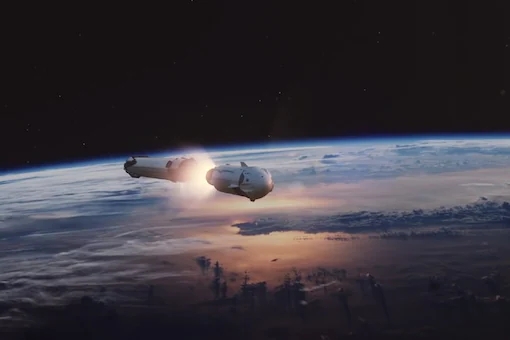The Earth has been estimated at a total mass of approximately 5.9722×1024 kg, or more commonly notated as 1 Earth Mass (ME). One Solar Mass – or the Mass of the Sun and notated as M☉ – is approximately 333,000 Earth masses. The whole of the solar system is estimated at 1.0014 Solar masses, meaning all the planets, moons, asteroids, and comets make up just 0.0014 the mass of the Sun. This all adds up to a lot of stuff floating around in our celestial backyard.
Us Earthlings, however, love to produce trash. We have spent vast amounts of time and energy converting earthly resources into products that ultimately lose value and become garbage, that is subsequently dumped on land and in water, since well before recorded history. Some of the greatest archaeological discoveries of our past come from ancient landfills and latrines. So, it is no surprise that our forays off our planet have also produced large quantities of waste.

Beginning on October 4th, 1957, Sputnik 1 launched aboard a modified Russian ICBM to become the first artificial satellite in space. Its orbit decayed over the coming weeks and fell back to Earth on January 4th, 1958, burning up in the atmosphere on in its way in. March 17th of the same year saw the United States launch the 3.2kg Vanguard 1 satellite, which still orbits the Earth today, along with the 31kg upper stage of its launch vehicle. Some 64 years later, the US Space Surveillance Network tracks around 20,000 artificial objects orbiting the Earth, with only 2,218 of those being operational satellites. Those are the most recent numbers from 2019, and with the rise of private space industry giants like SpaceX and Blue Origin, and more countries entering the space race every year, those numbers are growing faster than ever. But these are just the numbers of objects large enough to be tracked from ground-based observatories – like the Navy Precision Optical Interferometer outside Flagstaff, Arizona, which can track objects the size of a quarter. Accounting for even the smallest paint flecks, estimates place the total number upwards of 130,000,000 objects, made by humans, and still flying around the Earth at ungodly speeds.

“Space junk” is the colloquial term for all this debris, and generally carries a negative connotation. The International Space Station was recently forced to adjust its orbit and shield the resident scientists in their respective escape capsules when Russia tested a space weapon that destroyed a defunct satellite and created hundreds of thousands of small pieces of debris. Even the smallest piece of metal shaving orbiting at around 15,700 miles per hour could easily pierce through the outer layers of something like the ISS, causing depressurization, major repairs, or loss of life.

Despite these astounding numbers, we know that space is a BIG place. Collisions are not common occurrences, even with billions and trillions of micro-meteoroids scattered across the solar system. Impact craters on Earth, the Moon, Mars, and elsewhere about the Solar System tell us that major impacts do happen with relative frequency in the space timeline, but our technology is just advancing to the capability of capturing such events. Two such events have been documented, and both were with Jupiter. Astronomers everywhere watched as Comet Shoemaker-Levy 9 flew its Icarus like path and was torn apart by the immense gravity of Jupiter, crashing into, and leaving a trail of temporary scars in the Jovian atmosphere in July 1994. By comparison, on September 13th, 2021, a handful of amateur astronomers just happened to be photographing Jupiter when a bright flash appeared, estimated to have been caused by an asteroid around 300 ft in diameter.

As we develop new ways of tracking objects across space, such as by Greg Leonard and the team at the Catalina Sky Survey in Tucson, Arizona, more advance notice of impacts will follow. Many professional observatories are dedicating their clear nights to hunting for unknown comets and asteroids, while amateur astronomers are leading the charge in following the larger objects we have placed in uncontrolled and forgotten orbits. A SpaceX Falcon 9 booster that launched a weather satellite in 2015 was recently tracked by amateur astronomers to find that it will impact the far side of the Moon on March 4th. The first known unintentional collision of a human made object with the Moon, the 3.6-ton rocket is expected to meet its fate around 12:26 UTC. These calculations by amateur astronomers have allowed international space agencies to adjust the orbits of lunar satellites which may be in the way or – or may be able to witness this impact.

Sadly, being the impact will be on the far side of the Moon, we will not be able to observe it with our backyard telescopes. But with record numbers of orbital flights increasing year over year, I’m sure we will get more opportunities to witness collisions in space.

And just maybe in a few thousand years, space archaeologists will look to all these defunct satellites, rocket bodies, landers, rovers, and nuts and bolts to catalog the many long forgotten adventures of our current era. Or maybe it will just be another pile of orbiting space junk to dodge on our way to colonize the stars.
Author’s note: With the above-described size of space, and the amount of stuff out there, our understanding of objects and orbits increases day-over-day. Since the writing of this article, it has been hypothesized that the booster may be a Chinese Chang’e 5 booster instead of the originally reported SpaceX booster. This has been disputed by the Chinese government, and at this point we just don’t know whose rocket it is. As it gets closer to the moon, it is possible that the international fleet of satellites may properly identify it, and it’s just as possible that we may never know for sure. Either way, we are in for a scientific treat on March 4th.
